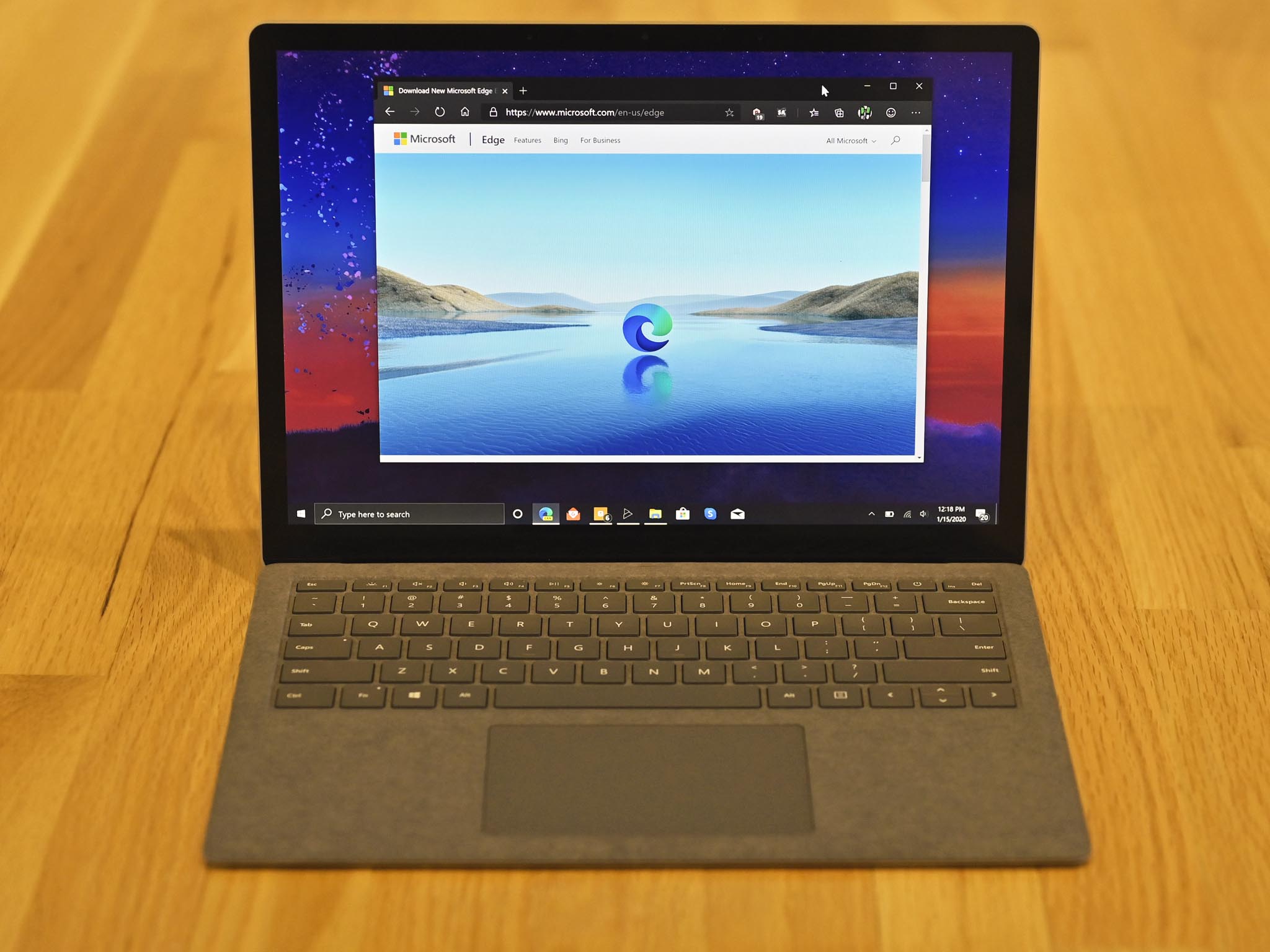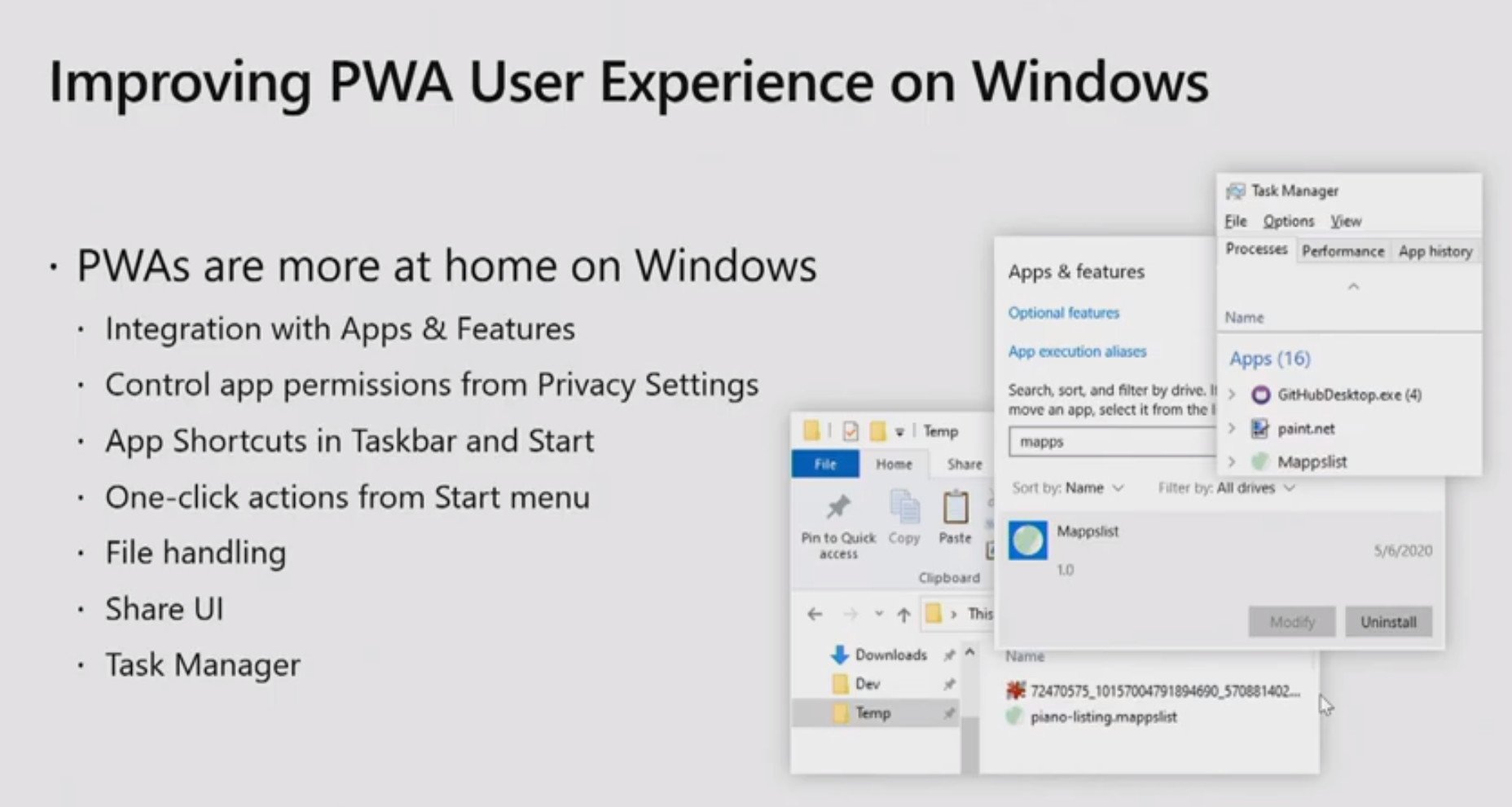Here's how Microsoft is making Edge PWAs feel more like native apps
Microsoft wants to combine the best of the web and native apps.

What you need to know
- Microsoft held a session discussing the future of Edge PWAs at Build 2020.
- The session offers an overview of Microsoft's moves to make PWAs feel more like native apps on Windows.
- The presenters outlined several new and existing features to make this possible.
In a session at its Build 2020 developer conference today, Microsoft offered a glimpse at the future of Edge progressive web apps (PWAs). The overall goal, presenters Sohum Chatterjee and Judah Himango explained, is to continue to make PWAs feel more like native app experiences on Windows. In Chatterjee and Himango's words, that involves taking the best of native and web apps to create something in the middle.
As part of the session, embedded above, Chatterjee and Himango laid out some of the features Microsoft has already implemented to create a more native-like experience, and those it has planned for the future. Some of the features the team has in the pipeline for Edge PWAs include:
- Setting PWAs as defaults for file types, URLs, and protocols.
- Native file system access.
- The ability to run on OS login.
- Setting PWAs as a share target.
- App shortcuts.
These features are all part of Project Fugu, an open source project Microsoft is part of to make PWAs more capable.
With Project Fugu improvements, the gap between PWAs and native apps should narrow. Things like allowing PWAs to set themselves as the default app for certain file types will open up new experiences that you cant achieve today, lowering the barrier to entry. For example, Microsoft gives the example of a photo editing PWA setting itself as the default for opening .jpg files.

Likewise, native file system access isn't currently available with the shipping version of Edge, but will replace the current system of having to download a file once you're done with it in the app. Instead, a PWA will be able to write directly to your file system for the specific file you're working on.
Microsoft says that file extension handling is expected to arrive in Edge version 86 later this year, while native file system access is available in the Canary channel today. The option to run a PWA on OS login is expected to hit Edge Canary this summer, while setting a PWA as a share target is expected in Canary in the coming weeks. App shortcuts, like jumplist actions, are already available to developers in Edge Canary.
Beyond these features, Microsoft says it's improving the native notification setup to allow apps to add badges to their icons. An app could, for example, display the number of unread messages on the taskbar icon much like native applications can do today. The team is also exploring other types of badges, like allowing a thunder cloud badge to show on a weather app icon to indicate the current weather.
All the latest news, reviews, and guides for Windows and Xbox diehards.
Finally, Chatterjee and Himango said that the team is looking to shift PWAs listed in the Microsoft Store to run on a Chromium-based engine sometime later this year. Until then, apps listed in the store will continue to run on the legacy EdgeHTML engine.
For more, the whole session is worth a look if you want a peek at what's coming to PWAs on Windows 10 and other platforms, or if you're a developer looking to build a PWA.

Dan Thorp-Lancaster is the former Editor-in-Chief of Windows Central. He began working with Windows Central, Android Central, and iMore as a news writer in 2014 and is obsessed with tech of all sorts. You can follow Dan on Twitter @DthorpL and Instagram @heyitsdtl.

